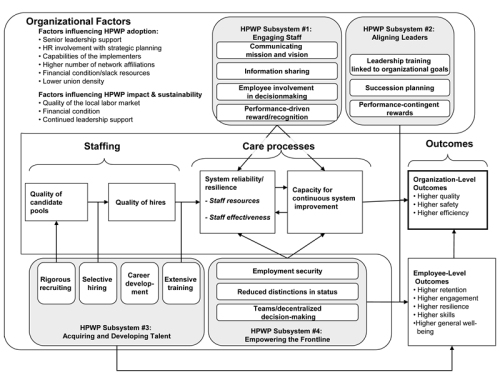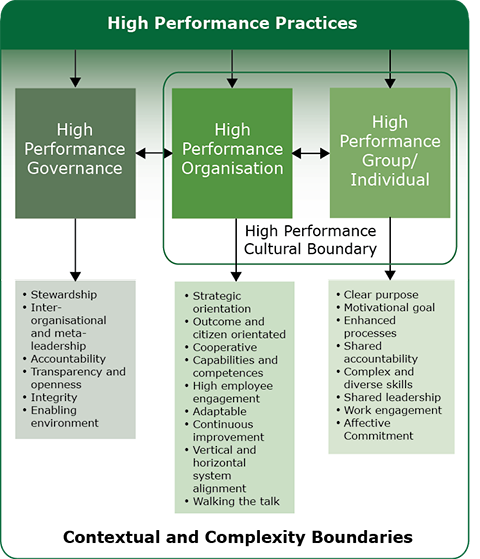 We touched on the ‘power of happiness’ a couple of years ago in an article looking at the dramatic improvement in the performance of the Australian cricket team caused by the change from a coach focused on ‘driving individual performance’ to one focused on ‘creating a performing team’, that improvement in performance continues to the present time (see The Power of Happiness). This post takes a wider look at the way happiness (and unhappiness) affect both the people working in an organisation and the organisation itself.
We touched on the ‘power of happiness’ a couple of years ago in an article looking at the dramatic improvement in the performance of the Australian cricket team caused by the change from a coach focused on ‘driving individual performance’ to one focused on ‘creating a performing team’, that improvement in performance continues to the present time (see The Power of Happiness). This post takes a wider look at the way happiness (and unhappiness) affect both the people working in an organisation and the organisation itself.
Everyone wants a motivated and productive workforce, there seems to be a direct link between worker satisfaction, motivation and performance – a happy workplace tends to be a productive workplace; and there is definite evidence that unhappy and de-motivated workers are less productive. What is less clear is does motivation generate happiness or are happy people more inclined to be motivated and productive?
Looking at the negatives first, a 2010 survey by the Australian Institute of Management, of more than 3,000 business people revealed that negativity, apathy and disillusionment are present in the executive ranks of many Australian organisations:
- 40% of respondents surveyed did not feel appreciated by their employer.
- 20% of participants expressed negative sentiments about working at their current organisation.
- Almost one in three of those surveyed criticised the workplace culture of their organisation.
- 34% of respondents admitted they could be putting more effort into their current role.
- 33% of those we surveyed said they are considering leaving their employer.
Surveys in the USA have shown similar trends with up to one third of the workforce disengaged or actively working against the interests of their employer, and nothing much seems to have changed in the period since the surveys.
One of the largest employer’s world-wide is the UK Civil Service headquartered in Whitehall London. The wellbeing of its workforce has been studied over many years, starting in 1967, with the findings published in the ‘Whitehall Studies’ (see: http://www.ucl.ac.uk/WhitehallII). The focus of these studies is the health of the Civil Service workforce, but there are strong links between wellbeing and motivation.
The Whitehall Studies and similar studies in Europe and Australasia show a clear relationship between position in the social hierarchy and mortality. This social gradient is present for most of the major causes of death, and has dispelled two myths. The first is that people in high status jobs have higher risks of heart disease. The second is that the gradient of health in industrialised societies is simply a matter of poor health for the disadvantaged and good health for everyone else. This aspect of heath outcomes is important, but outside of the control of any manager.
Whilst most managers within organisations cannot do much about the external factors affecting health and wellbeing (although good employers do a lot in this area) they can have a major influence on the work environment which is the other major factor in the overall wellbeing of all employees. The studies conclusively demonstrate that a motivated, happy, workplace is more productive and has better health outcomes than an unhappy one.
Within this aspect of wellbeing, the key finding from the Whitehall studies is that stress at work is the number one cause of lost time, but understanding ‘stress’ so it can be managed is not straightforward. Conventional wisdom has it that a stressful job is one characterised by a high degree of pressure and responsibility. New research, to which Whitehall II contributed, shows that negative stress at work tends to result from an imbalance between the psychological demands of work on the one hand and the person’s degree of control over the work on the other. The combination of high demand and low control generates stress leading to measurable increases in illness; with low control being especially important. ‘Figure 2’ below taken from Whitehall II clearly shows people in jobs characterised by low control have higher rates of sickness.
High demand on its own appears to be far less damaging – for many people a ‘stretch assignment’ or new challenge may be demanding but the ‘positive stress’ associated with tacking the challenge by using skills, including opportunity for developing skills, if managed correctly is a stimulus to enhanced performance.
The other antidote to negative stress is the team environment. Working with supportive colleagues and managers improves health and reduces sickness as shown in ‘Figure 3’ below:
Another controllable factor is the balance between effort and reward. High effort in the work place is a desirable quality. The Whitehall findings demonstrate that high effort must be matched by appropriate rewards. The way work is organised and the climate of feedback in the workplace all potentially affect each of the three crucial aspects of rewards; self-esteem, status and income (I will discuss rewards in the next post).
Creating a happy, committed, high performance team.
The Whitehall II study focused on illness and the negatives in a workplace, the place I want to finish the post is on the positives of creating a happy and productive workplace.
As a starting point, almost all of the negative influences on health defined in the Whitehall reports are juxtaposed to well established motivational theories – provide people with the right motivation and you eliminate most of the problems defined above. The evolution of these theories has been outlined in our post The Evolution of Motivation and the various xxx are defined in our White Paper WP1048 – Motivation.
The key is designing the work so that everyone in the team experiences:
- Job satisfaction
- Good relationship with co-workers
- Good relationship with their manager
- New and interesting challenges
- Feeling valued by the organisation.
Once these elements are in place, the key challenge is allowing people to enjoy working. In this respect setting hard targets can be counterproductive! A target is a predetermined level of performance that people are expected to achieve, the problem is if people have the know-how to achieve the target, there is little motivation to surpass the target. But if they do not have the know-how to achieve the target, they are left with two options: distort or game the system. Goals may cause systematic problems in organisations due leading to unethical behaviour, increased risk taking, decreased cooperation, and decreased intrinsic motivation. As the ongoing banking crisis has demonstrated, aggressive goal setting within an organization will foster an organisational climate ripe for unethical behaviour (see more on this in: The normalisation of deviant behaviours).
Shift from ‘management setting targets’ to a process of challenging everyone to help move the organisation from where it is now to where it needs to be and you encourage the achievement of the best possible outcome.
– Challenge people and teams to improve the way work is done by redesigning their work methods.
– Challenge them to develop systems that provide clear business value.
– Challenge them to devise an architecture that will meet future growth projections.
– Challenge them to create new products that will be successful in the marketplace.
Challenges empower people; they provide the opportunity for autonomy and mastery in pursuit of a clear purpose (all strong intrinsic motivators). Then all that is needed is for leaders to respect and acknowledge the individuals in their team, provide support and protection to the team, and importantly to celebrate the successes of the team (see The Power of Happiness). But remember, leadership is not a position description – see more on the attributes of a leader.
The challenge for a leader is to create the environment for happiness to flourish, a supportive and successful team. After that it is largely up to each individual to decide to enjoy the opportunity to ‘be happy’! To an extent the multitude of self-help advice on the subject is correct, each person decides if they wish to be happy of miserable. The good new is happiness tends to be contagious, in the right environment it only takes one or two happy souls to start the ball rolling and over a relatively short period of time most people will ‘learn to be happy’. For the few who insist on spreading negativity and unhappiness, remember another trait of high performance leaders is “getting the right people on the bus, [and the] the wrong people off the bus “ (Jim Collins – Good to Great).
In summary – a well led, motivated team will be a happy team and happy teams are productive teams. They are great to lead and great to be part of! The alternative is the type of problems identified in the Whitehall studies. The challenge is creating the culture change needed to allow people to enjoy working on your team – it may not be easy, but it is worth the effort.








